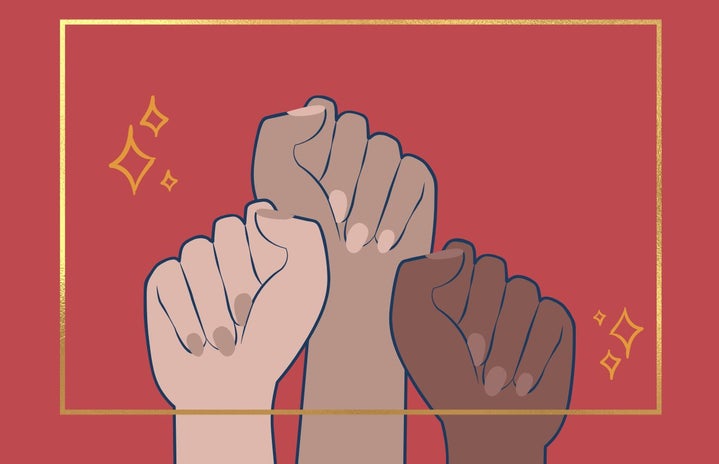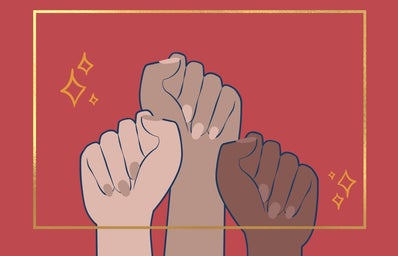International Women’s Day is celebrated around the world on the 8th of March. In contemporary times, we’ve seen an influx of women centric advertisement campaigns which emerge as soon as March begins but vanish when the month comes to an end. Several campaigns like #SheCanCarryBoth by Prega News and #HerShe by Hershey India are not only tokenistic in their approach of celebrating women’s day but their vision of women empowerment is also focused on upper class women.
This widespread capitalist development is a contradiction to the origins and roots of International Women’s Day. Although there are a lot of contestations and debates over the ‘correct’ version of history regarding the origins of the day, there is a general consensus that it was started by the efforts of working class women. One version of history states that there was a march by thousands of working class women in 1857 in New York. The main demands were increase in wages, reduction in work hours and so on and so forth. According to this, further efforts of organisation and struggle of women were inspired by the New York incident. This view has been critiqued by another perspective which introspects how this tale could be a fabricated one to divert attention from decades of organisation and protests led by socialist and communist women.
In both these perspectives the growing presence of industrialisation and capitalism is felt. These developments indeed spark concerns regarding the conditions of women, especially working class women. Clara Zetkin, a far left feminist from Germany, wrote about the concerns of working class women and the larger fight of women’s movement in her German magazine Die Gleichheit (Equality). She articulated the idea of how mainstream bourgeois feminism is different from proletariat feminism. She explained how reformist measures undertaken by upper class women didn’t affect working class women much. Real equality and empowerment of women would come after the fall of capitalism and class divide. Therefore, the fight was larger than reformist measures.
Numerous Socialist women’s organisations in Germany like the German Social Democratic Party (SPD) organised bi- annual conferences and gatherings in the 19th- 20th century. This frequent organization would become a strengthening factor in the International Socialist Women’s Movement. The first international level convention of Socialist women was held in 1907 at Stuttgart, Germany. The right to vote was emphasized here. However, it was also acknowledged that this demand would be pursued without any sort of collaboration with bourgeois feminists.
The second conference of working women was held in Copenhagen in 1910 under the leadership of Clara Zetkin. It was attended by over 100 women from over 17 countries. Women affiliated to Socialist parties and working class women groups formed the majority. In this convention, the proposition of celebrating an International Women’s Day was made and passed unanimously. The focus here was a class conscious move towards women empowerment. Right to vote keeping the class consideration in mind was a pertinent demand. In 1909, the Socialist Party of America had declared February 28th, the last Sunday of February, as National Women’s Day.
Pre and post World War I developments in women’s movements influenced the date of Women’s Day to a great extent. Before World War I in 1913-14, Russian women along with women in Europe held wide scale protests against war. In this period, women’s day was observed on February 23rd in Russia as it was the last Sunday of February. Russia followed the Julian Calendar but according to the Gregorian Calendar, that date was March 8th. Even after World War 1, rallies and protests by women’s organizations against War and in support of women’s rights continued on the same date. This further concretized the concept of Women’s Day on the 8th of March.
In 1975, the influence of the women’s movement was acknowledged by the United Nations. It declared March 8 as the official International Women’s Day. Since 1996, the UN has been releasing annual themes like ‘Celebrating the past, planning for the future,’ ‘Women at the peace table’ etc. Critiques of this move argue how this move was a way of suppressing the fall of capitalist order and the ultimate liberation of women from class hierarchies.
Women’s Day has been celebrated for a century in different parts of the world. It is important to pay attention to the kind of demands and issues Socialist feminists had raised. It is important to move beyond the liberal and bourgeois understanding of Women’s Day. It is not a single day movement but a symbolic day representing decades and centuries of struggle which still has a long way to go. The struggle will continue until all women are free from the shackles of oppression. As Audre Lorde once said, “I am not free while any woman is unfree, even when her shackles are very different from my own.”


